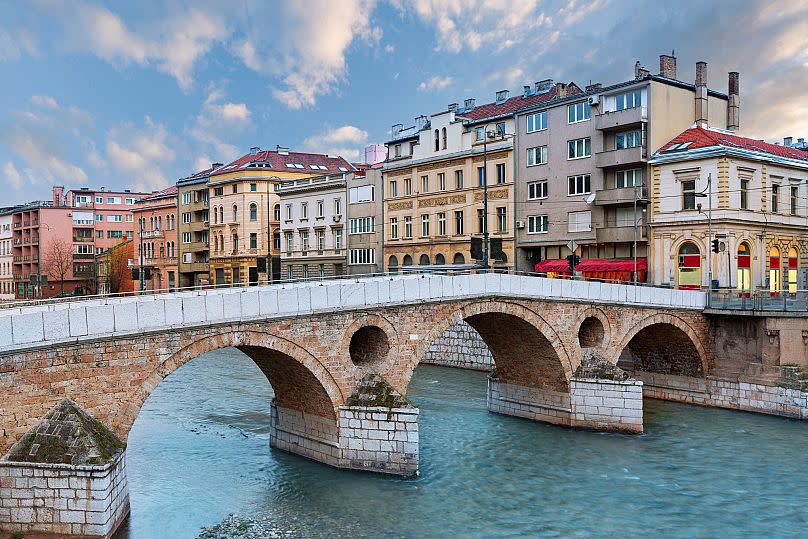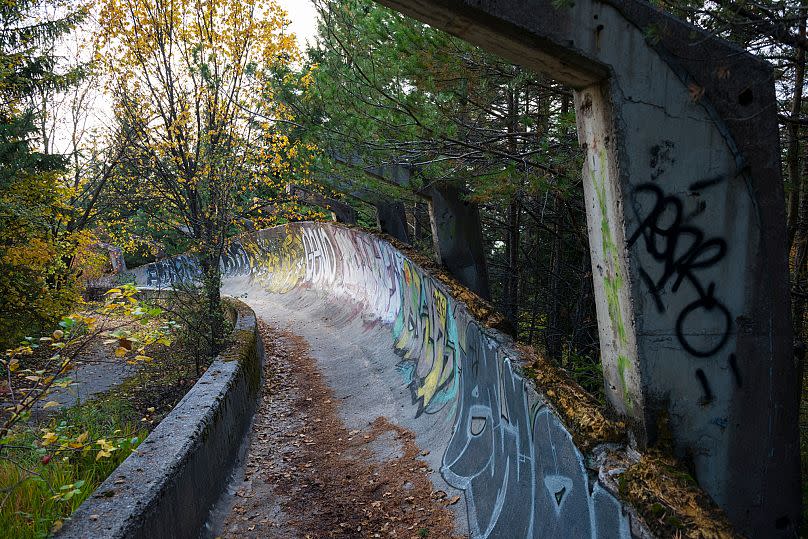Known as the place that sparked the start of WWI and marred by years of war in the 1990s, Bosnia might not be your first thought when planning a holiday in Europe.
But perhaps it should be.
With the average pint in Sarajevo costing less than €2, and a five star hotel in the centre of the capital priced at €120 per night in the summer – there are luxury and budget travel options affordable for everyone.
Sarajevo is becoming increasingly popular
The Bosnian capital of Sarajevo is seeing its highest number of tourists in post-war history this year.
Hills above the city are now sites where foreigners gather to see the famous skyline in a valley surrounded by high mountains.
This Balkan city is often described as a place where east meets west as architectural styles vary in different areas to reflect its mixed history.
In the Old Town – known as Bas Carsija and built by the Ottomans in the 15th Century – visitors explore traditional Bosnian craft shops and popular restaurants.
Here you can also find one of the Balkan’s oldest mosques and one of the largest buildings in the old town – Gazi Husrev-beg. Though it was heavily fired upon during years of war in the 90s thanks to its thick walls and a post-war restoration project, it still stands proudly in the city. It’s still a working mosque but visitors can enter for around €1.50.
Unlike the mosque, many buildings haven’t been fully restored and so don’t be surprised if you see bullet holes.
Just a stone’s throw away is where heir to the throne Franz Ferdinand was assassinated by young Bosnian-Serb rebel Gavrilo Princip on Latin Bridge in 1914, effectively causing the beginning of World War One. Today, a museum at the site of the assassination is one of the most visited tourist spots in Sarajevo.

100 years after the killing of Ferdinand, the Bosnian National Library was rebuilt following the 1992-1995 war, in which Serb shelling from the hills above destroyed it completely.
Though the rebuilt library is something to behold, unfortunately, it doesn’t contain many old books as around 90 per cent of its collection was destroyed.
In other parts of the city, you can see a more Austro-Hungarian influence. Traditional neo-renaissance and gothic buildings dominate, marking the decades of rule by the Austrian Empire. Take a walk along the river to see some of the best examples of this.
What is the best way to explore Sarajevo?
The small city is easy to explore on foot so a great way to start your stay here is by doing a walking tour.
Your guide will explain the city’s unique history as well as pointing out which tourist traps to avoid and giving some helpful local insight into the best spots to try. Though not everyone speaks English, the locals are known to be incredibly friendly.
July and August are likely to be the hottest months to visit Sarajevo so many people suggest the best time of year to explore the city is May, June or September.
If you do find yourself struggling in the heat though, there are plenty of water fountains, providing clean, drinking water.
A local legend says that if you drink from the Sebilj Fountain in the old town, you will return to the city in the future.
If you take a taxi a little way out of the city centre, a tour through Sarajevo’s Tunnel of Hope (Tunel spasa) makes for an interesting and educational visit.
The 800 metre tunnel was dug by citizens in the 1990s to connect the city with the United Nations ‘safe place’ at the airport and provided a route to transport food, medicine and weapons during the war.
If you’re looking for something a little more active, you could try a day hike up to Mount Trebevic. At the top, there are beautiful views over the city, but there’s also a cable car if you want to enjoy the view without the effort. The return hiking route from the city centre is around 21km.
Visitors also love exploring the abandoned bobsleigh track from the 1964 Winter Olympics on the mountain. If you time your visit right, you may even hear calls to prayer echoing magically across the valley from the city’s mosques.

And if you’re more the sit-with-a-drink-and-enjoy-the-view type then grab a glass at Avaz Twist Tower in the city centre. For a small fee, you can get a 180 degree view of Sarajevo from the top of the 176 metre tower.
Should I visit anywhere else in Bosnia?
While there is plenty to do in the city itself, if you’ve got the time it’s also worth making the trip to Mostar. There are daily trains between the two cities and the journey takes around two hours.
The historic city is filled with colourful bazaars and at the heart of Mostar is the old bridge (Stari Most). Here you can see people diving from its dizzying heights into the freezing Neretva River. If you’re brave enough, you can even have a go yourself by signing up for one of the diving schools.
If you do plan on exploring further afield in Bosnia it’s wise not to go too off-piste without a guide. Though all major populated areas and major routes have been cleared, there is a small chance of unexploded landmines in more remote areas.
Watch the video above to explore Sarajevo.